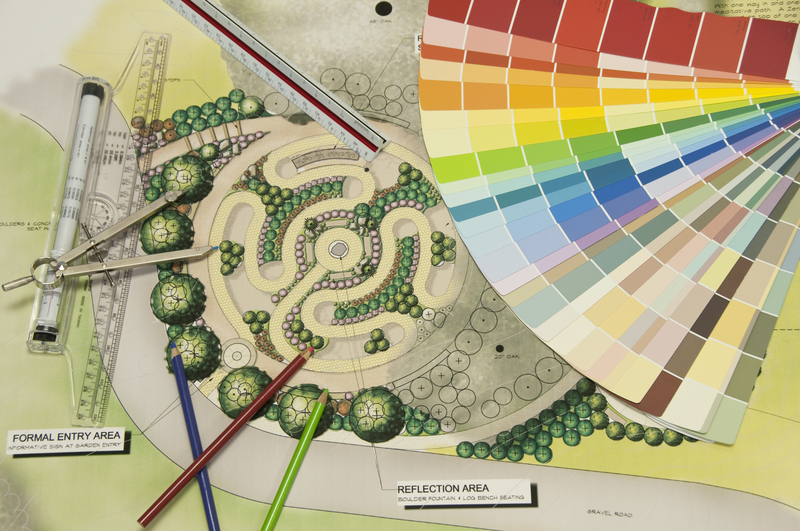3 Simple Techniques for Effective Weed Management
Posted on 25/09/2025
3 Simple Techniques for Effective Weed Management
Weed control is a critical component of maintaining a healthy lawn and productive garden. Regardless of the size of your landscape, efficient weed management helps prevent these pesky invaders from robbing desirable plants of water, sunlight, and nutrients. If you are tired of watching weeds take over your flowerbeds, vegetable patches, or turfgrass, you're not alone. This comprehensive article will uncover the top 3 simple techniques for effective weed management and how you can apply them successfully to maintain a lush, resilient landscape.

Understanding the Importance of Weed Control
Weeds are opportunistic plants that thrive under various conditions. Their ability to outcompete crops and ornamental plants makes weed prevention strategies essential. Beyond being eyesores, weeds harbor pests and diseases, deplete soil resources, and reduce overall plant health. Proper weed management practices not only improve aesthetic appeal but also protect ecosystem integrity.
Why Do Weeds Need to Be Managed?
- Competition: Weeds compete with crops and ornamentals for vital resources such as water, nutrients, and light.
- Pest Harborage: Many insects and pathogens use weeds as alternate hosts, potentially spreading to your desirable plants.
- Allergenic and Toxic Properties: Certain common weeds can trigger allergies or be toxic to pets and people.
- Reduced Yields: In agricultural or garden settings, unchecked weed growth can significantly reduce crop yields.
With so much at stake, investing time in weed management techniques is crucial. Let's dive into the most effective--and remarkably simple--approaches.
Top 3 Simple Techniques for Effective Weed Management
1. Cultural Weed Management Practices
One of the easiest and most sustainable ways to control weeds is by creating an environment where desired plants thrive but weeds struggle. This strategy is called cultural weed management. Here are some proven methods:
Mulching
Mulching is a highly effective cultural practice. By applying a thick layer of organic or inorganic mulch around your plants, you create a physical barrier that blocks sunlight, inhibiting weed germination and growth. Additionally, mulch helps conserve soil moisture and regulate temperature.
- Organic Mulches: Bark chips, straw, shredded leaves, compost.
- Inorganic Mulches: Landscape fabric, rubber mulch, gravel.
Tip: Apply a 2-3 inch layer of mulch for best results. Replenish as needed and avoid piling mulch directly against stems or tree trunks to prevent rot.
Plant Spacing and Crop Rotation
Weeds love empty spaces. Tight plant spacing in beds and rows reduces the amount of exposed soil, limiting opportunities for weeds to take hold. Similarly, rotating crops each season disrupts weed life cycles and prevents them from establishing permanent residency in your garden.
- Densely Plant: Select appropriate spacings for flowers and vegetables to form a living groundcover.
- Rotate Crops: Change the location of plant families each year to minimize weed adaptation.
Pro Tip: Try interplanting fast-growing species with slower ones. The vigorous plants will shade the soil and suppress emerging weeds.
2. Mechanical Weed Control Methods
Physical removal is one of the most immediate ways to combat weeds. All you need are the right tools and some elbow grease. Mechanical weed management involves uprooting or cutting weeds, either manually or with specialized equipment.
Hand Pulling and Hoeing
Hand pulling is effective for small gardens or when weeds are young and easy to uproot. For denser patches, a hoe can slice or dislodge weed seedlings just below the soil surface. The key is consistency:
- Act Early: Remove weeds before they flower and set seed.
- Get the Roots: Especially for perennial weeds, ensure entire roots are removed to prevent regrowth.
- Use the Right Tools: Garden hoes, hand forks, and dandelion diggers can make the job easier.
Tip: Take advantage of moist soil after rainfall--roots come out more easily!
Tillage and Cultivation
For larger plots such as vegetable gardens or farm fields, light tillage destroys shallow-rooted weeds. However, excessive tillage can harm soil structure and encourage more weeds by bringing dormant seeds to the surface. Use this method judiciously:
- Shallow Cultivation: Focus on top few inches of soil to slice weed seedlings.
- Main Timing: Perform before planting or during early growth stages of crops.
Tip: Consider no-till gardening along with heavy mulching for sustainable, low-disturbance weed management.
3. Preventive and Chemical Weed Management
Prevention is often the best weed management strategy. By preventing weeds from getting established, you save both time and effort in the long run. In cases of severe infestations, herbicides can play a role, but always as a last resort and applied responsibly.
Pre-emergent Herbicides
Pre-emergent herbicides stop weed seeds from germinating. They can be especially useful in lawns and flower beds where annual weeds are a problem. Popular compounds include pendimethalin or corn gluten meal (an organic option).
- Timely Application: Most pre-emergent products should be applied in early spring before weeds emerge.
- Read Labels: Always follow manufacturer instructions for safe and effective use.
Tip: Avoid disturbing the soil after applying pre-emergents, as this breaks the protective barrier.
Proper Sanitation and Barrier Methods
Sanitation is another preventive cornerstone. Weeds often arrive via contaminated tools, shoes, animal fur, or compost. Clean tools, manage compost piles, and use weed-barrier fabrics under paths or beds to keep weeds at bay.
- Clean Up Debris: Remove old plant material and weed seeds from the garden.
- Choose Clean Mulch: Ensure mulch is free from weed seeds.
- Edge Gardens: Use edging to keep grass and invasive plants from creeping into beds.
Selective Post-emergent Herbicides
Spot-treat persistent weeds with targeted herbicides only when other measures are impractical. Always identify the weed species first and select the appropriate product. Limit use to avoid harming wanted plants and beneficial soil organisms.
- Non-chemical Spot Treatments: Boiling water, vinegar sprays, or flame weeders offer alternatives for paths and hardscapes.
Remember: Integrated weed management--using a combination of the above techniques--delivers superior results while minimizing environmental impact.
Frequently Asked Questions About Weed Control
What Is the Most Eco-friendly Weed Management Method?
The most environmentally safe methods are cultural and mechanical, such as mulching, dense planting, and hand removal. These minimize chemical use and protect pollinators and soil microbes.
How Often Should Weed Control Be Done?
Weed control is an ongoing process. Frequent inspections and early intervention, especially during peak weed growth periods (spring and summer), are key to preventing larger infestations.
Are There Any Natural Alternatives to Chemical Weed Killers?
Yes! Mulching, solarizing soil (covering with plastic to bake weed seeds), and organic pre-emergents (like corn gluten meal) are all natural, effective weed control tactics.

Conclusion: Take Action with These Simple Weed Management Techniques
Effective weed control methods don't have to be complicated or time-consuming. By focusing on the fundamentals--cultural practices like mulching and dense planting, mechanical control such as hand pulling and hoeing, and preventive strategies like sanitation and judicious herbicide use--you can create a beautiful, productive, and weed-free garden or landscape.
Start with these 3 simple techniques for effective weed management to achieve healthier lawns, more bountiful harvests, and a vibrant outdoor environment. Your plants--and your peace of mind--will thank you!
Summary of the 3 Key Weed Management Techniques
- Cultural Tools: Mulch, dense plantings, crop rotation, and groundcover to prevent weeds.
- Mechanical Action: Hand weeding, hoeing, and light tillage for prompt removal and control.
- Preventive/Chemical Strategies: Pre-emergent herbicides, sanitation, barriers, and selective post-emergents as needed.
For more tips on lawn weed control, sustainable gardening practices, and the latest weed management solutions, bookmark this guide and keep your garden thriving season after season!

